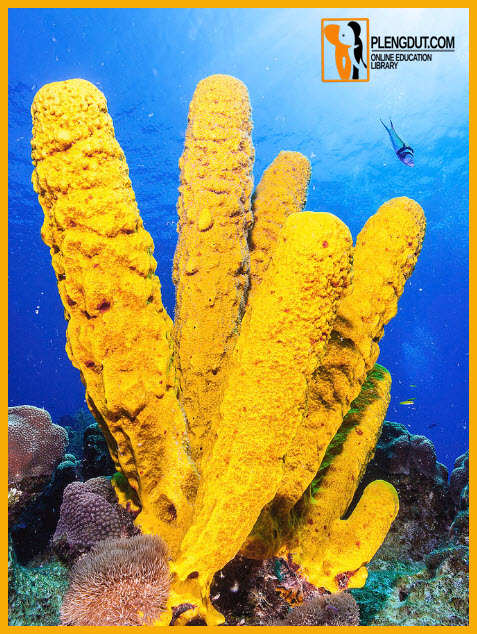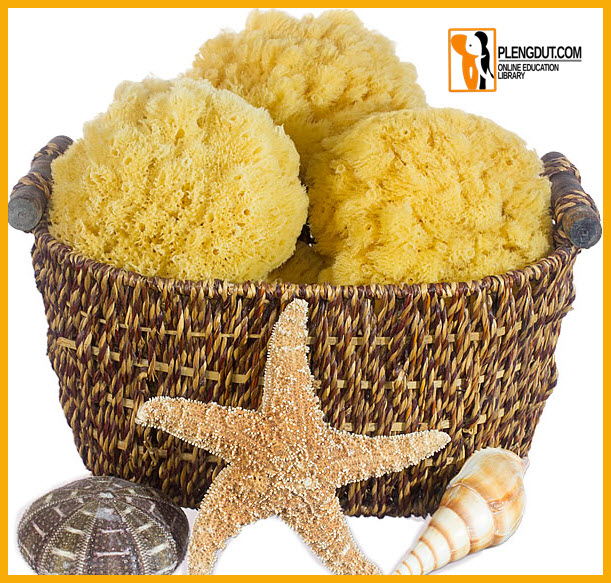Animals are multicellular organisms that in contrast to plants must take in nourishment in the form of organic substances. These substances are generally broken down and absorbed in special cavities within the body (digestive systems). Animals can be divided into two large groups: invertebrates and vertebrates. The first group, composed of animals without a vertebral column, are sometimes referred to as lower animals. They include by far the largest number of species, even the highly diverse group of insects, along with others such as worms, bivalves, and gastropods. The vertebrates, on the other hand, include more highly developed animals, from fish to amphibians, reptiles, birds, and mammals, and thus also human beings.
INVERTEBRATES
Invertebrates are multicellular organisms that lack a back- bone. They include about 95 percent of all known animal species. The bodies of some invertebrates are completely exposed, while others are protected by an outer skeleton or a shell. They range from simple organisms such as sponges to the highly developed spiders or insects.
What are spongy organisms?
Sponges (phylum Porifera) are multicellular organisms with a very simple body without organs, true muscles, or nerve cells. Adult sponges are sessile, that is, they are attached to a surface. The larvae can move freely.
At first sight, spongy may look like plants. They come in various shapes, and may look like crusts, shrubs, nets, barrels, or mushrooms. It was not until the 19'" century that they were recognized as invertebrate animals. Now there are about 5,000 known species of sponge. Most live in the ocean, where they can survive down to depths of almost 20,000 feet (6,000 m), but there are also about 120 freshwater varieties. Different species of sponge can vary considerably in size. Some measure only a few fractions of an inch in diameter, while others can grow as large as over six feet (two m).
Structure
Although sponges have various basic body types, or construction plans, most sponges have an outer layer of surface cells (pinacocytes), as well as an inner layer of flagellated cells (choanocytes). Between the two layers, there are numerous mobile cells, similar to amoebae, and supporting skeletal structures made of calcium carbonate, silicic acid, or spongin.
Feeding and reproduction
Pores lead to the exterior of the sponge via channels originating in chambers lined with choano- cytes. The flagellae that line the pores en- sure a constant flow of water bringing food particles (detritus, plankton, and bacteria) into the interior of the sponge for the cho- anocytes or amoeboid cells to digest. Parti- cles which cannot be digested flow into the central cavity and water flows out of a wide opening on top, the osculum, washing these particles back outside. The sponge is able to push water through the osculum at such speeds that only unused water will be sucked back in. The water flowing through the sponge delivers not only food particles but also oxygen for respiration.
Sponges may reproduce sexually or asexually, in which case they undergo division or budding. During sexual reproduction, a fertilized egg cell goes through several larval stages. After the planktonic phase, in which they float through the water, they attach to a surface and form a new sponge. During periods of low temperatures, sponges form gemmules that remain dormant, only turning into new sponge when temperatures rise.
SHOWER SPONGES
Sponges have been used for body care since ancient times. These organisms are used due to their ability to absorb up to ten times their own weight and their elastic fibers, which allow water to be easily released by squeezing the sponge. Sponge divers go deep into the ocean to collect live sponge that are then gutted and sold as shower sponges. Today, however, most shower sponges are synthetic.
 |
| Pict: Yellow sponges pump huge quantities of water through their hollow bodies while feeding. |
 |
| Pict: Shower sponges are harvested mainly in the Mediterranean. Caribbean, and Red Seas. |
 |
Pict: The Latrunculia. a branching sponge, lives in the Red Sea. Its sexual reproduction is hermaphrodite and viviparous. |
